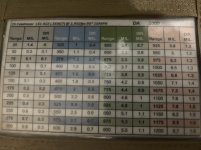Need some help/advice as to how to set up my range card for a Mammoth/Vortex type match. What I have done in the past is pre-print some cards with ranges from 400-1150 in 50yd increments, then have wind calls for 4, 8, 12 & 15 mph.
It didn't really work great for me, so I'm looking for suggestions.
I generally run a secondary rifle in 5.56, if that helps. I may take the primary going forward with a 6.5CM in the future.
Any advice will be appreciated!
It didn't really work great for me, so I'm looking for suggestions.
I generally run a secondary rifle in 5.56, if that helps. I may take the primary going forward with a 6.5CM in the future.
Any advice will be appreciated!



